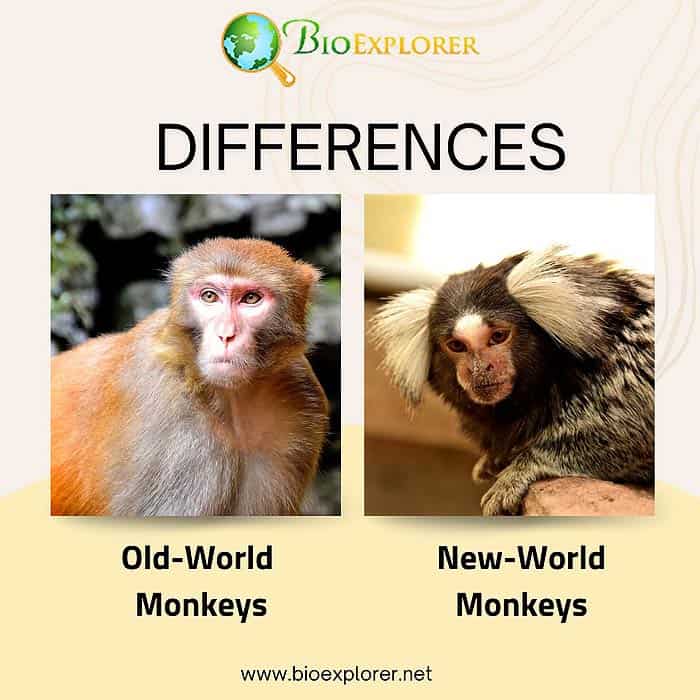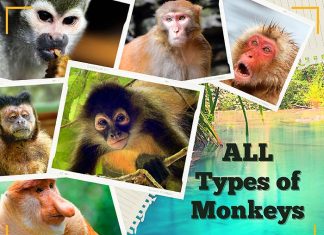
Old World monkeys hail from two continents, Africa and Asia, living in various terrains, including rainforests, savannah, mountains, and shrublands. Old-World Monkeys are the largest primate family in the world. Baboons, macaques, colobus, Guenons, and langurs are examples of old-world monkeys.
New World monkeys come from tropical regions of central and south American countries. Marmosets, sakis, night monkeys, spider monkeys, Uakaris, and tamarins are examples of New-World Monkeys.
Old-World Monkeys vs New-World Monkeys
| Taxonomic Family | Cercopithecidae. | Cebidae, Callitrichidae, Atelidae, Pitheciidae, and Aotidae. |
| Geographic Origin | Africa and Asia. | The Americas. |
| Relative Body Size | Medium to large-sized. | Small to medium-sized. |
| Diet | Either herbivorous or omnivorous depending on the subfamily. | Varies a lot by species, but many are frugivorous or insectivorous. |
| Active Time | All species are diurnal. | All species are diurnal except for the 11 night monkey species (which are nocturnal). |
| Hands | They possess nails and opposable thumbs. | They possess no nails and non-opposable thumbs. |
| Tail | Non-prehensile. | Prehensile or non-prehensile depending on the species. |
| Teeth | Dental formula of 2.1.2.3 (meaning each quadrant of the mouth has 2 incisors, 1 canine, 2 premolars, and 3 molars). | Dental formula of 2.1.3.3 (meaning each quadrant of the mouth has 2 incisors, 1 canine, 3 premolars, and 3 molars). |
| Eyes | Trichromatic vision. | Depending on the species and sex, vision can be monochromatic, dichromatic, or trichromatic. |
| Nose | Downward-facing nose and nostrils. | Flat, broad nose with sideways-facing nostrils. |
| Sexual Behaviour | Most species fall somwhere between polygynous and polygynandrous. | Smaller species tend to stick to monogamy, while larger ones are typically polygamous. |
| Gestation | Gestation period is typically around 5 to 7 months. | Gestation period is, on average, about 5 months. |
![]()
334 Types of Monkeys
Monkeys are classified into two main groups: Old-world monkeys and New-world monkeys. Explore all 334 different types of monkeys and their facts here.
Cite This Page
APA7MLA8Chicago
BioExplorer.net. (2025, May 28). Old World Monkeys Vs. New World Monkeys. Bio Explorer. https://www.bioexplorer.net/animals/mammals/monkeys/differences/.
BioExplorer.net. "Old World Monkeys Vs. New World Monkeys" Bio Explorer, 28 May 2025, https://www.bioexplorer.net/animals/mammals/monkeys/differences/.
BioExplorer.net. "Old World Monkeys Vs. New World Monkeys" Bio Explorer, May 28 2025. https://www.bioexplorer.net/animals/mammals/monkeys/differences/.












